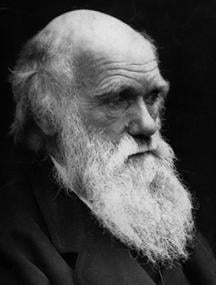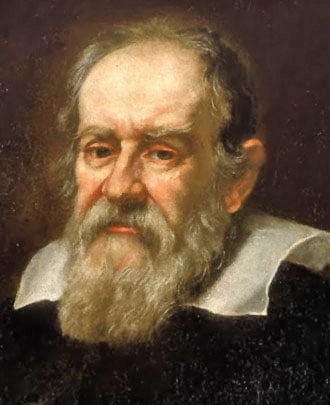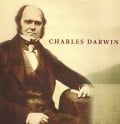Galileo vs. Darwin and Wallace

Several hundred years ago, when widely accepted scientific theories of today were in their infancy, innovative thinkers such as Galileo Galilei, Charles Darwin, and Alfred Russel Wallace embarked on lifelong endeavors to persuade the public to consider new scientific findings. Galileo, an astronomer and physicist, found evidence supporting Copernicus’ heliocentric theory. Darwin and Wallace, both naturalists, proposed the theory of natural selection. Both of these theories were highly controversial, especially among Christians and religious authorities. The theories were said to contradict The Bible in a time when religion was viewed as an absolute truth. Both theories were met with similar resistance, however Galileo used different persuasive tactics than Darwin and Wallace in order to support his findings and beliefs. While Galileo focuses mainly on denouncing opposing views, Wallace and Darwin work to prove theirs with evidence and examples.
In order to garner support for his heliocentric view our solar system, Galileo writes a letter to the Grand Duchess Christina. The positive aspects of his letter begin when he flattering her with the name “Your Serene Highness,” and he continues the letter with eloquently with beautiful language (Galilei 175). This impressive, though at times superfluous, writing is used by Galileo to help persuade both Christina and others who read it of his beliefs. In addition to the language, Galileo begins to establish his credibility by immediately acknowledging the opposing views, stating that his findings are “in contradiction to the physical notions commonly held among academic philosophers” (Galilei 175). By admitting that he is in the minority, one can assume that Galileo is accepting of the truth, regardless of whether it is convenient for him. This is an important quality, especially for scientists, who must hold truth as the pinnacle of existence.
To build his credibility even further, Galileo uses excerpts from both St. Augustine’s work and The Bible. St. Augustine, a philosopher and theologian, held many ideas that are strikingly consistent with Galileo’s: “‘A thing is not forever contrary to the faith until disproved by most certain truth. When that happens, it was not holy Scripture that ever affirmed it, but human ignorance that imagined it’” (Galilei 206). Both St. Augustine and Galileo are in agreement in their belief that The Bible, while important for moral instructions, is secondary in authority to science when it comes to physical matters. Convincing others of this is the cornerstone of Galileo’s purpose throughout the letter. Unfortunately, he focuses mainly on the issue of literal interpretation of the Bible, rather than concentrating on the teaching of astronomical theories.
Although he establishes credibility early in his work, Galileo makes several mistakes that cause his letter to seem more like a rant than a scientific explanation. He ignores basic debate etiquette by mocking the opposition at every opportunity: “These men have resolved to fabricate a shield for their fallacies out of the mantle of pretend religion and the authority of the Bible” (Galilei 177). While his blunt assessment of the opposition may be true, it has the potential to offend many, which would discourage them from considering Galileo’s ideas seriously. He even goes so far as to vilify his opponents, calling them “shallow mind[ed]” and “vulgar” (Galilei 200). Attacking his rivals seems to turn the letter from a scientific exposition to an emotional outburst, which counteracts his valid ideas. Galileo would have been much more effective had he settled with simply stating why his adversaries are incorrect, rather than insulting their intelligence.
Contrary to Galileo, Wallace and Darwin have a completely different style of argumentation. Through letters and scholarly writing, they work to convince both other scientists and the general public of their novel theory as to how modern species came into existence. While acknowledging immediately that the theory may be difficult to believe, neither Darwin nor Wallace dwell on their opponents’ views: “Seeing the contented face of nature, this may at first well be doubted but reflection will inevitably prove it to be true” (Darwin 89). The men go on to define every term and concept so that the theory is as clear to the reader as possible. Darwin explicitly states that natural selection is a “means of selection, by which those individuals are preserved … which are best adapted to the place they fill in nature” (Darwin 92). Then, the authors give example after example in order to make the theory come to life in the readers’ minds. Darwin and Wallace use birds, dogs, rabbits, and plants, among various other organisms, to assist the reader in understanding the concept of natural selection. The copious amount of support allows the reader to rely on the authors as scientists with authority.
Darwin and Wallace’s astounding number of examples, clear explanations, and lack of emotional language give their work on natural selection a professional, believable undertone. This encourages every reader to seriously consider the facts with which he or she is presented as reliable and truthful. From the very beginning, the reader can count on Darwin and Wallace to be straightforward and to the point, speaking only of topics relevant to their theory. In addition, neither brings religion directly into the argument, although the divergence of species from a common, simpler ancestor does not agree with the literal interpretation of The Bible. By leaving religion out of the debate, Darwin steps further away from the realm of opinion and personal feelings. Instead, he proves himself to be a worthy scientist by introducing a new principle, explaining it, and giving an example. This format, used consistently, shows a methodical thinking process and implies further that Darwin can be trusted to tell the truth about his scientific theory.
Galileo’s dogged insistence to denounce the literal interpretation of The Bible, rather than explaining and supporting his heliocentric findings, contrasts sharply with the methodical and fact-based arguments given by Darwin and Wallace. Both had similar tasks: to gain support and to convince the overly religious public of a new scientific theory. While both theories are clearly valid by today’s standards, an ignorant reader would most likely discount Galileo’s propositions based off of his letter. Conversely, Darwin and Wallace’s arguments seem sound and reliable, causing a reader to give their theory serious consideration. The different persuasive tactics employed show that while emotion-based arguments and attacks on the opponent can spark controversy and sometimes even interest, a solid, fact-based argument will seem more believable and stable.

Works Cited
Darwin, Charles. “On the Tendency of Species to Form Varieties; and on the Perpetuation of Varieties and Species by Natural Means of Selection.” The Portable Darwin. Ed. Duncan Porter & Peter Graham. New York: Penguin, 1993. 86-104.
Galilei, Galileo. “Galileo Galilei to the Most Serene Grand Duchess Mother.” Discoveries and Opinions of Galileo. Trans. Stillman Drake. New York: Anchor Books, 1957. 175-216.
Your Turn
Whose argumentation style do you prefer?
Related Essays
- My Evolving View on Evolution
An exploration of the differing views of evolution and the never ending struggle between religion and science. - The Origin of Language
My thoughts on an essay claiming that bipedalism was the first step toward a complex language system in humans. I also explore similarities between other species today and our human ancestors, as well as the possibilities for the future. - Subjectivity of the Mind
I have compared and contrasted the views on the subject of mind through the writing of three experts: Rene Descartes, Sigmund Freud, and Gerald Edelman. The common conclusion is that the mind is a subjective entity. - The Infinite: The Question of the Cosmos
An exploration of society's understanding of "infinity" as it pertains to the origin of the universe. Both scientific and religiously based options are also considered.
© 2012 ReverieMarie









